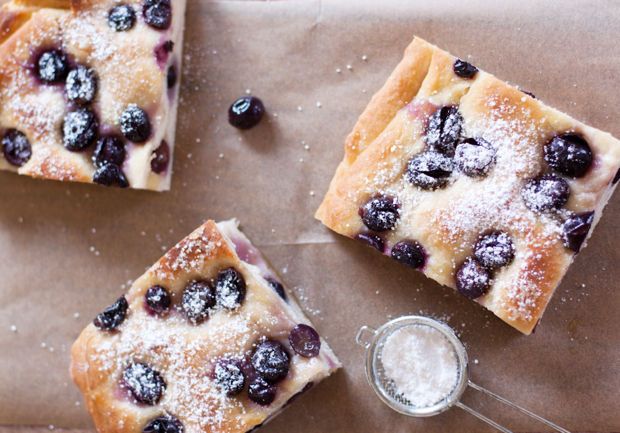Every Tuesday, Italian expat Emiko Davies is taking us on a grand tour of Italy, showing us how to make classic, fiercely regional dishes at home.
Today: A traditional Tuscan bread -- for one month only.

For one fleeting month of the year, schiacciata all'uva, a sticky, sweet bread full of bright, bursting grapes, can be found in Florence's bakery shop windows -- and then it's gone, not to be seen again until the next September. It's a tradition goverened by the very seasonal nature of grapes in Italy, and one that also has an extremely close tie with the wine harvest in the fall.
Born in and around the wine growing areas of Florence and the Chianti, the original peasant recipe was, and still is, made with simple ingredients of Tuscan country kitchens -- wine grapes, olive oil, bread.
Essentially, it is an unsalted bread dough (typical of Tuscan bread, salt has been omitted from bread dough since at least the 12th century), a sweet version of the regular schiacciata, which is the Tuscan version of what some might recognise as focaccia, the classic dimpled bread from Genova. Aptly meaning ‘squashed’ or ‘flattened’, schiacciata is named for those characteristic pock marks created by the baker's fingers that become wonderful pockets for olive oil and salt, scattered liberally over the top of the piping hot bread when it is pulled out of the oven.

In the sweet version, two layers of dough are filled and topped with red grapes (seeds in and all – that crunch is part of what makes it so delightful) and a sprinkle of sugar, then baked until the grapes are oozy and the bread golden. These days, it is usually made with fragrant, berry-like concord grapes but sometimes you'll still find it made with native Tuscan wine grapes known as canaiolo. These sweet, dark grapes make up part of the blend of Chianti wine, playing a supporting role to sangiovese.
There are rarely adaptions made to the traditional Tuscan recipe, but often you can find the addition of aniseed -- a typical Tuscan flavouring for sweets. Avoid using table grapes or white grapes for this grape bread -- they just don’t do it justice in terms of flavour or appearance. If you can’t get good, sweet concord grapes or it’s the wrong season, try this with blueberries. It’s completely unorthodox, of course, but it’s a delicious substitute and you get a much closer result than using table grapes.
A sprinkling of raw sugar over the top before baking is usually sufficient, but powdered sugar dusted over the top once completely cool can add a bit more sweetness and visual appeal. It will soak in and dissolve after a little while, leading to a lovely mess for finger licking goodness -- just what you want when savoring something that doesn't last long.

Grape Focaccia (Schiacciata all'Uva)
Serves 6 to 8
4 cups (500 grams) type 00 or plain flour
1 3/4 cup (400 milliliters) lukewarm water
1 teaspoon (7 grams) active dried yeast (see here for more on yeast)
1 pound (450 gr) of concord grapes
6 tablespoons sugar
1/4 cup extra virgin olive oil
Confectioner’s sugar, optional
See the full recipe (and save and print it) here.
Photos by Emiko Davies




See what other Food52 readers are saying.